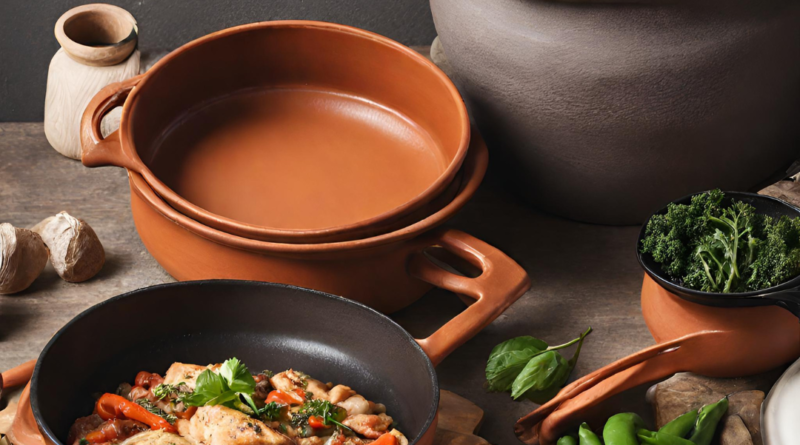How do you choose between a glazed and unglazed clay pot for a recipe?
Choosing between a glazed and unglazed clay pot for a recipe depends on the specific dish you’re preparing and your cooking preferences. Here are some factors to consider when deciding between glazed and unglazed clay pots:
1. Porosity and Moisture Retention:
– Unglazed Clay Pot: Unglazed clay pots are more porous and can absorb moisture during cooking. This can be beneficial for dishes that benefit from slow, even moisture release, such as stews, braises, or roasts. The natural porosity of unglazed clay can enhance the flavors and textures of these dishes.
– Glazed Clay Pot: Glazed clay pots have a smooth, non-porous surface due to the glazing process. They are less porous than unglazed pots and may not release moisture as readily. This makes them suitable for dishes where you want to retain more moisture, such as casseroles or dishes with sauces
2. Ease of Cleaning:
– Unglazed Clay Pot: Unglazed clay pots can be more challenging to clean because food particles can become trapped in the porous surface. They require gentle cleaning with warm water and a soft brush or sponge to avoid damaging the clay.
– Glazed Clay Pot: Glazed clay pots are easier to clean because of their smooth, non-porous surface. They can be cleaned with regular dish soap and a sponge, similar to cleaning other types of cookware
3. Flavor Retention:**
– Unglazed Clay Pot: Unglazed clay pots have the potential to retain and release subtle earthy flavors, which can enhance the taste and aroma of dishes over time. This is valued by some cooks and is often associated with traditional cooking methods.
– Glazed Clay Pot: Glazed clay pots do not absorb or release flavors because of their non-porous surface. If you want to maintain the original flavors of your dishes without any added nuances, a glazed clay pot may be more suitable
4. Versatility:
– Unglazed Clay Pot: Unglazed clay pots are often preferred for traditional dishes and slow-cooked recipes. They are well-suited for recipes that benefit from the unique properties of unglazed clay, such as heat retention and moisture release.
– Glazed Clay Pot: Glazed clay pots are more versatile and can be used for a broader range of recipes, including those that require sauces or more precise moisture control. They are a good choice when you want to use clay cookware for various cooking techniques
5. Presentation:
– Unglazed Clay Pot: Some cooks prefer the rustic and natural appearance of unglazed clay pots for presentation. These pots can be placed directly on the table for serving.
– Glazed Clay Pot: Glazed clay pots may have decorative designs and colorful finishes that enhance their visual appeal when used for presentation. They are also suitable for serving dishes directly at the table.
Ultimately, the choice between glazed and unglazed clay pots depends on your cooking style, the specific recipe you’re preparing, and your personal preferences. Both types of clay pots have their unique advantages, and having both in your kitchen can offer versatility for a wide range of cooking experiences.



